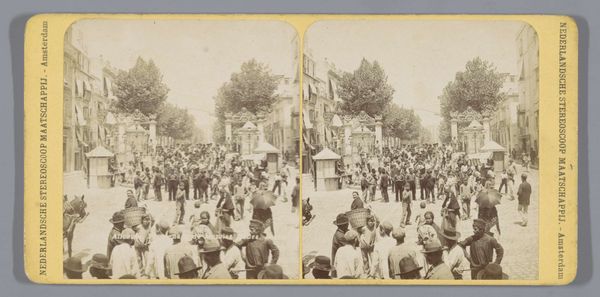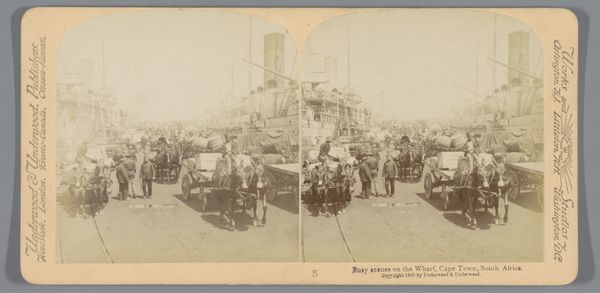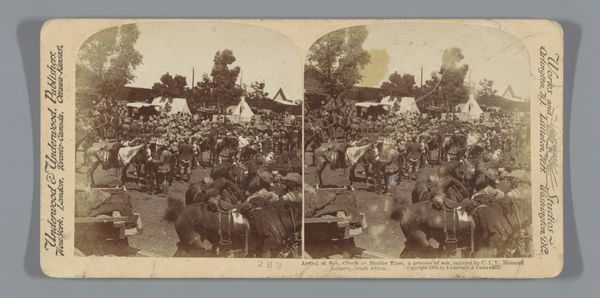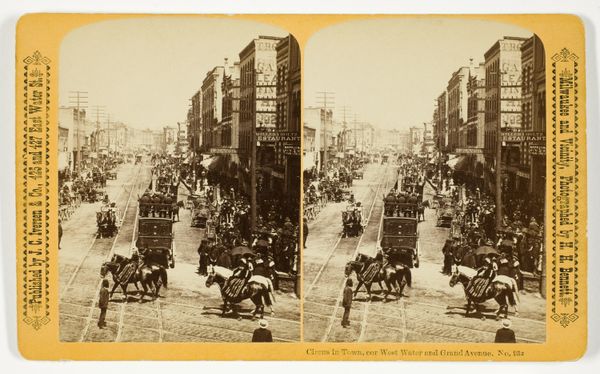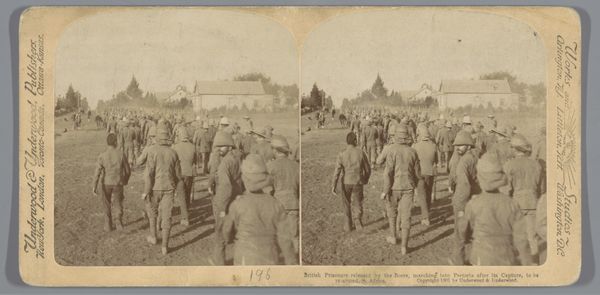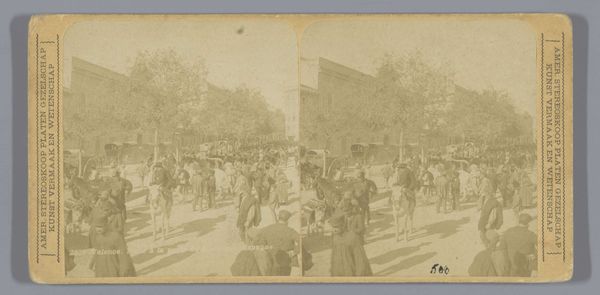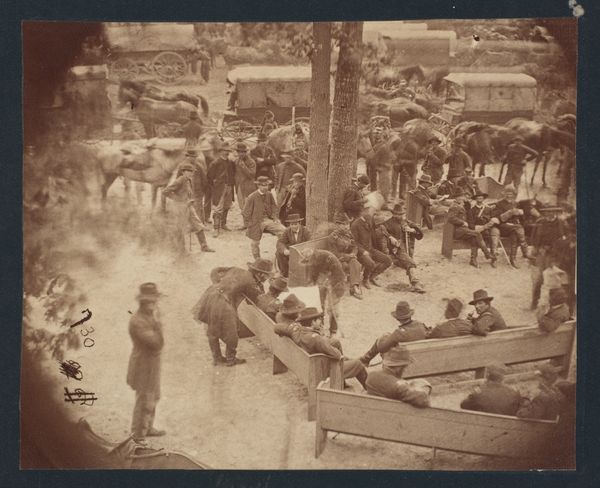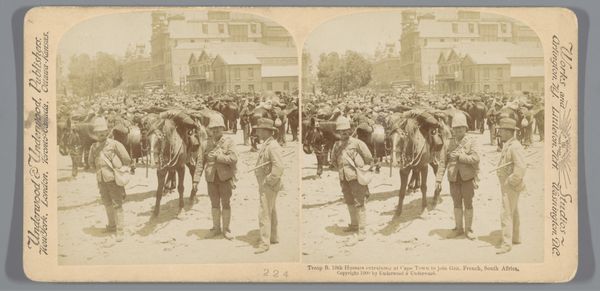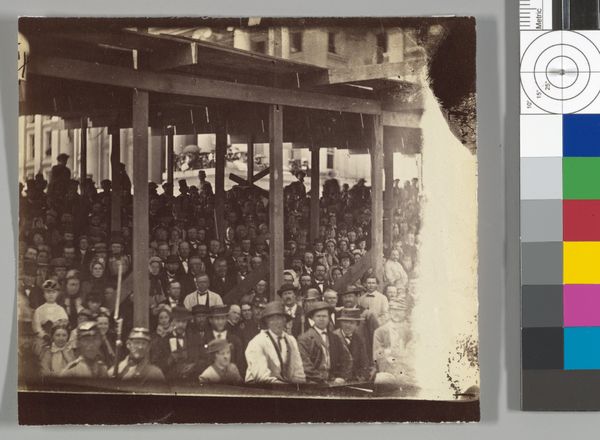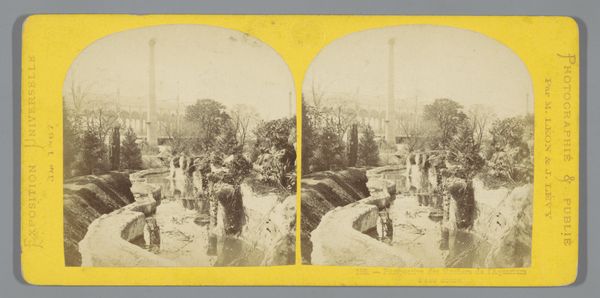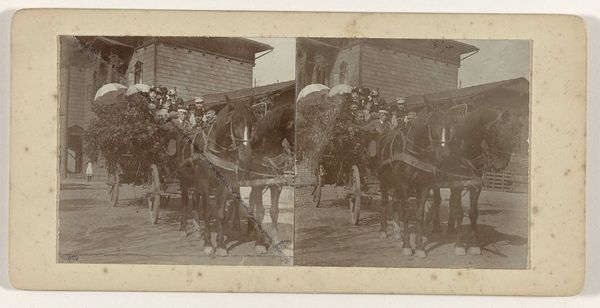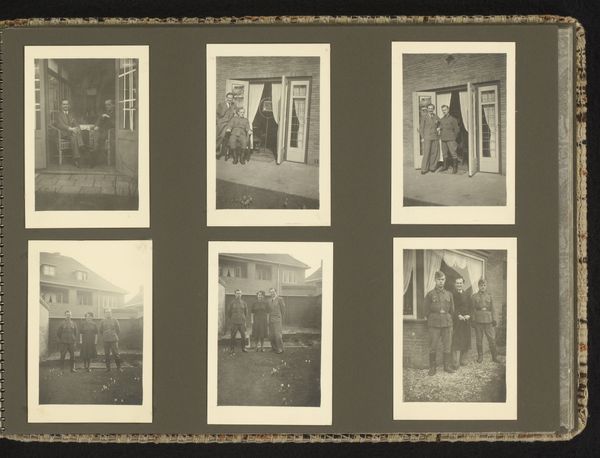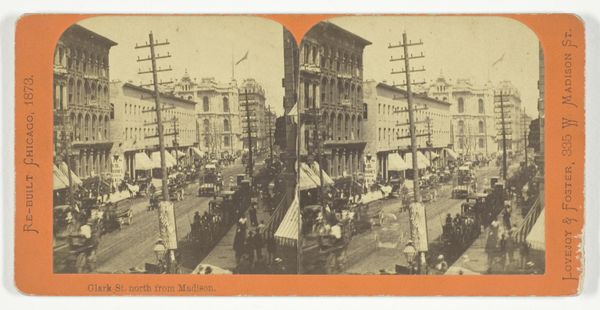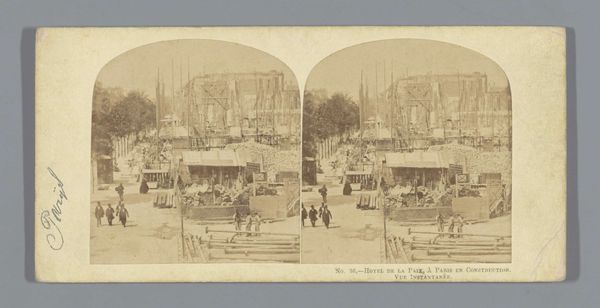![[Pair of Stereograph Views of General Jacob S. Coxey's Army of the Unemployed] by J. F. Jarvis](/_next/image?url=https%3A%2F%2Fd2w8kbdekdi1gv.cloudfront.net%2FeyJidWNrZXQiOiAiYXJ0ZXJhLWltYWdlcy1idWNrZXQiLCAia2V5IjogImFydHdvcmtzL2ZiZmNjM2Y0LTVmMDMtNGI5Zi05NmE2LTQ4ZmFkOTMwNjU1MC9mYmZjYzNmNC01ZjAzLTRiOWYtOTZhNi00OGZhZDkzMDY1NTBfZnVsbC5qcGciLCAiZWRpdHMiOiB7InJlc2l6ZSI6IHsid2lkdGgiOiAxOTIwLCAiaGVpZ2h0IjogMTkyMCwgImZpdCI6ICJpbnNpZGUifX19&w=3840&q=75)
[Pair of Stereograph Views of General Jacob S. Coxey's Army of the Unemployed] 1850 - 1919
0:00
0:00
photography, gelatin-silver-print
#
portrait
#
landscape
#
photography
#
gelatin-silver-print
#
men
#
ashcan-school
#
realism
Dimensions: Mount: 8.9 x 17.8 cm (3 1/2 x 7 in.)
Copyright: Public Domain
Editor: This gelatin-silver print, titled "[Pair of Stereograph Views of General Jacob S. Coxey's Army of the Unemployed]" by J. F. Jarvis, dating from between 1850 and 1919, really captures my attention. It seems to depict a somber march. What social narratives do you see at play within this photograph? Curator: The image resonates powerfully with the sociopolitical unrest of its time. Coxey's Army, comprised of unemployed workers, marched on Washington D.C. to demand government intervention during the economic depression of the 1890s. Do you notice anything specific about who is included in the image, and how they're represented? Editor: I see a lot of working-class men and they are carrying signs, but the photo itself feels somewhat detached from their struggle. Curator: That's an insightful observation. The photographic medium itself plays a role here. While seemingly objective, it inherently frames and filters reality. What happens if we view the image through the lens of labor history and power dynamics, how does it re-frame our understanding? Editor: It underscores how easily marginalized voices can be visually represented – almost objectified – even in documentation meant to highlight their plight. I also wonder about who had the power to capture and disseminate images like this at the time. Curator: Exactly. The act of photographing becomes an exercise of power, deciding whose story gets told and how. Looking closely, who do you think the intended audience was? The stereograph format suggests a middle-class viewership, consuming images of social upheaval from a safe distance. Editor: It’s almost like rubbernecking, a safe way for viewers to observe these working-class marchers. That casts a whole different light on the scene, and also raises concerns about what's changed and what hasn't in our own era of photojournalism and social media. Curator: Precisely. By questioning the photographer's positionality and the intended audience, we gain a richer understanding of not only the historical event but also the complexities of representation itself. Editor: This has really transformed how I interpret not only the photo’s historical moment but how images like these circulate in culture to shape ideologies about economic inequality and social movements. Curator: It’s by examining these tensions that we find the continued relevance of the artwork, urging us to question power dynamics both then and now.
Comments
No comments
Be the first to comment and join the conversation on the ultimate creative platform.
